Following Germany’s World War Two defeat in 1945, the victorious Allies were keen to gather up as much of their jet and rocket technology and expertise as they could. These wunderwaffe (“wonder-weapon”) aircraft and rocket designs would go on to heavily influence western and Soviet aviation and rocketry in the coming years of the Cold War.
Messerschmitt Me 163 Komet

The Messerschmitt Me 163 Komet rocket powered interceptor was a prime example. Designed to quickly intercept the never-ending Allied bomber formations overhead, around 370 Me 163 Komet interceptors were produced for the German Luftwaffe but nowhere near that number were ever operational at one time and with the numerous technical issues, fuel shortages and the dangerous nature of flying the aircraft, they were only operational from July 1944 to May 1945. This being said they were still a revolutionary concept.
Aeronautical Engineer Alexander Lippisch designed the Me 163. He had been experimenting with tailless delta winged aircraft designs since 1931. In 1939 the Reichsluftfahrtsministerium (RLM – Reich Aviation Ministry) transferred him to Messerschmitt to design an aircraft around the rocket engines that were being developed by Hellmuth Walter.
By August 1940 they had test flown under rocket power the DFS 194 aircraft powered by a Walter RI-203 rocket engine producing 882 lb of thrust. It was flown by Heini Dittmar on several successful flights at Peenemunde and reached speeds up to 550 km/h (342 mph). The success of the DFS 194 lead to priority being given to the program and it formed a vital stepping stone to the development of the Me 163 Komet.
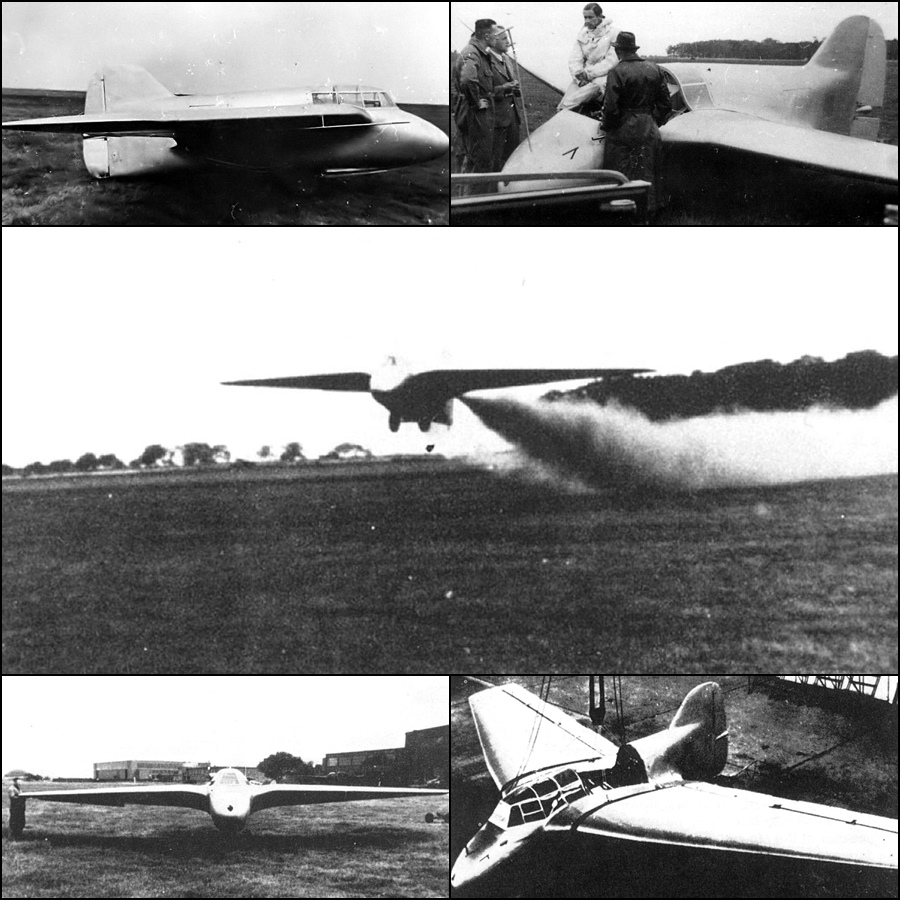
The production of the Me 163A prototypes commenced in early 1941 and powered flight testing was underway by September 1941. On October 2nd, 1941 the Me 163A V4 prototype flown by Heini Dittmar set a world speed record of 1,004.5 km/h (624.2 mph)! By 1944 the Me 163B Komet production model armed with 2 x 30mm Mk 108 cannons with a relatively low muzzle velocity of 540 meters per second (this would prove to be a problem in high-speed combat) and powered by a Walter HWK 109-509A liquid-fuel rocket engine producing 3,800 lb of thrust was capable of speeds up to 959 km/h (596 mph)!




The Me 163B was soon unleashed upon Allied bomber formations but although it had good flight characteristics at high-speed, ultimately the Komet was a design of folly that was more deadly to its pilots than to Allied aircraft! Only 9 Allied aircraft were recorded as shot down for the loss of at least 14 Me 163’s in operational combat and accidents.
The Me 163 pilot would be hurtled into the air, jettisoning the wheeled dolly following take-off, then attempt to get above Allied bomber formations, with the fuel all used up (there was only enough for 7.5 minutes of powered flight), he would dive down for a quick attack (generally it was going too fast for the Mk 108 30mm cannons to hit the target!), then descend by gliding to the ground and touch down on a landing skid (the aircraft was still maneuverable whilst gliding but without the previous rocket generated speed was vulnerable to Allied fighter attack). This entire process was fraught with danger for the poor pilot!

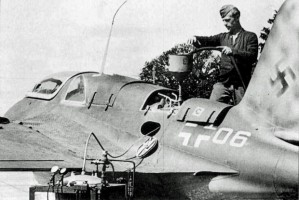
Apart from the dangers associated with flying so fast, it was dangerous to fly at low speeds and during take-off and landing. The Me 163 used the highly volatile propellants of T-Stoff oxidizer (hydrogen peroxide) and C-Stoff (methanol-hydrazine) to create rocket fuel. The Walter rocket motor basically created propulsion through controlling the explosion that arose when the two types of fuel came into contact with each other!
This fuel combination was also highly corrosive, deadly to touch, and was highly combustible when in contact with organic material (i.e. the pilot)! The pilots wore protective clothing and gloves but it was still a risky situation at all times and some pilots were literally dissolved in fuel related accidents.
The fuel was just as likely to explode the aircraft following a fuel leak before it even reached its target and if you landed with any fuel left it was also likely to explode! This was not ideal in a tiny aircraft with an aluminium fuselage and wooden wings. To protect it from enemy gun fire the Me 163 did have a strengthened nose and bullet proof glass in the cockpit though!
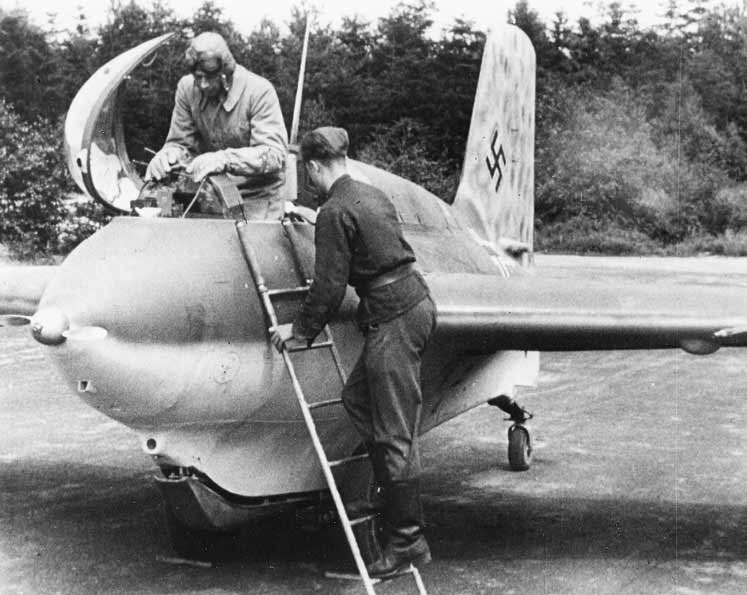
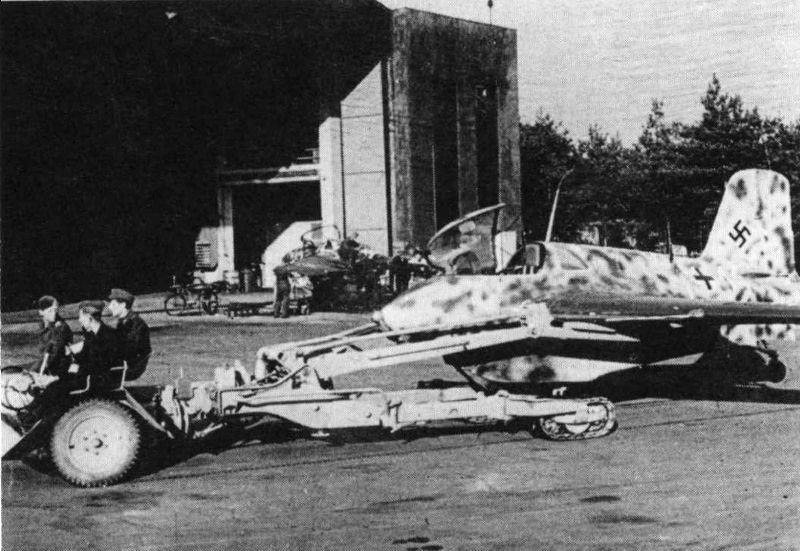
Hanna Reitsch Survives The Komet
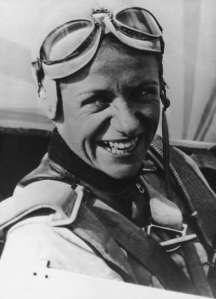
With or without fuel, flying “The Devil’s Sled” could be a dangerous prospect. Even the most qualified and experienced Me 163 test pilot Heini Dittmar was not immune to the dangers of flying the Komet. During a test flight in November 1941 he stalled an Me 163A resulting in a heavy landing which badly injured his spine. Dittmar was apparently in hospital for a year following the accident!
Despite knowing well the dangerous associated with the aircraft, in October 1942 famed German test pilot Flight Captain Hanna Reitsch was excited to be at the peak of her career when given the opportunity to become part of the test flying program for the Me 163 Komet at the Messerschmitt factory in Neuburg (it was considered a prestigious post to fly this revolutionary aircraft). Earlier in May 1942 she had flown a rocket powered Me 163A on a single flight describing it as “fascinating, like thundering through the skies sitting on a cannonball”.
Hanna was not permitted to conduct any further powered flights, but on October 30th, 1942 flying an unpowered Me 163B on a gliding test (her fifth gliding flight that month) she ran into some trouble. Just seconds after her towed take-off she went to release the wheeled dolly but suddenly the aircraft began to vibrate. For what ever reason her radio was not working so she could not communicate with the tow plane that was still attached. A crew member aboard it was waving frantically at her and flares were shot off from the airfield below to alert her to a problem. The wheeled dolly had not jettisoned and the landing skid could not be used!

They towed her up higher (above 9,000 feet) and Hanna tried to use positive and negative G’s to release it but with no success. The aircraft continued to vibrate violently. Standard protocol was to bail out if there was any safety doubts but being a true test pilot she was not going to abandon such a valuable aircraft whilst there was still a chance to safely land it! The problem was not just with the dolly as the electrical instruments and landing flaps were also not working!
Hanna decided to take it down and land but the with all the extra weight, the speed and approach height were above the recommended landing parameters. On her final turn to commence a landing approach Hanna lost control of the aircraft. It plowed into the ground at 241 km/h / 150 mph, bounced twice and ended up doing a 180 degree spin on the ground before coming to a halt! The aircraft was demolished but somehow she was still upright and alive!
Hanna opened the cockpit canopy and soon noticed she was bleeding from her nose. It turned out to be completely severed off! Always the conscientious test pilot she grabbed her note pad and scribbled down what had happened then covered her face with a handkerchief to not shock her rescuers! She then not surprisingly passed out! She came to and was driven to a hospital (she walked inside). Following x-rays she was soon operated upon having suffered the following injuries – a severely bruised brain, fractured skull (in six places!), her nose was completely destroyed (reconstructed with an artificial nose), her jaw displaced and she suffered multiple broken vertebrae! Its amazing she survived but we all know if fuel had been onboard she would have been incinerated! Even so her life was still hanging in there by a thread.

Hanna Reitsch was a civilian pilot. Despite it being a military honour, she was awarded the Iron Cross, First Class for her courage in flight. She became the first woman to receive the medal and lauded as a German hero.
Against all odds she left the hospital at the end of March 1943. She then stayed in a mountain home to further recover and become physically fit again. Before long she was unofficially flying gliders and powered aircraft at a nearby military flight school. In August 1943, 10 months after the crash she was officially declared medically fit to return to flying. She eventually returned to the Me 163 project but despite her protests the powers that be would not let her fly a powered version again due to the injuries she sustained in the accident.
She soon left the Me 163 program to tour the Eastern Front on a morale boosting visit to the troops, then by 1944 was involved in another rocket project of sorts, the Fieseler Fi 103R Reichenberg piloted V-1 “Buzz Bomb” (another hasty and thankfully short lived program that was essentially a suicide weapon). She continued to fly for the Third Reich until the end of the war (including famously landing a Fieseler Fi 156 Storch on the street in Berlin whilst under heavy Soviet attack during the Battle of Berlin in April 1945 to facilitate a meeting between General Ritter von Greim and Hitler), was imprisoned for 18 months in American captivity, then continued her postwar flying career and lived on until 1979 (aged 67).
Messerschmitt Me 163C
A prototype of an improved Me 163C variant with a more powerful dual chambered (added cruising chamber) rocket engine that Helmuth Walter was working on, the Walter HWK 109-509.B, larger wing, increased fuel capacity and a pressurized cockpit with a bubble canopy to improve visibility was developed (3 were planned but only 1 flew and apparently not with the intended engine). These improvements increased the fuel range and increased the maximum altitude of the Me 163 but the C variant did not go into production.

Messerschmitt Me 263 Scholle
Further design work was assigned to Junkers. In 1944 Junkers developed 3 prototypes of an improved and larger rocket interceptor with a planned retractable tricycle undercarriage (it was fixed in the prototypes), increased wing size, increased fuel capacity, a pressurized cockpit and a bubble canopy. It was designated as the Junkers Ju-248 Flunder (“Flounder”) but in November 1944 it was reassigned and redesignated as the Messerschmitt Me 263 Scholle (“Plaice”) to reflect its Me 163 association. The intention was to install a more powerful BMW rocket engine into the production version of the Me 263 but this did not eventuate (or possibly the Walter HWK 109-509.C dual chambered rocket that was being developed).
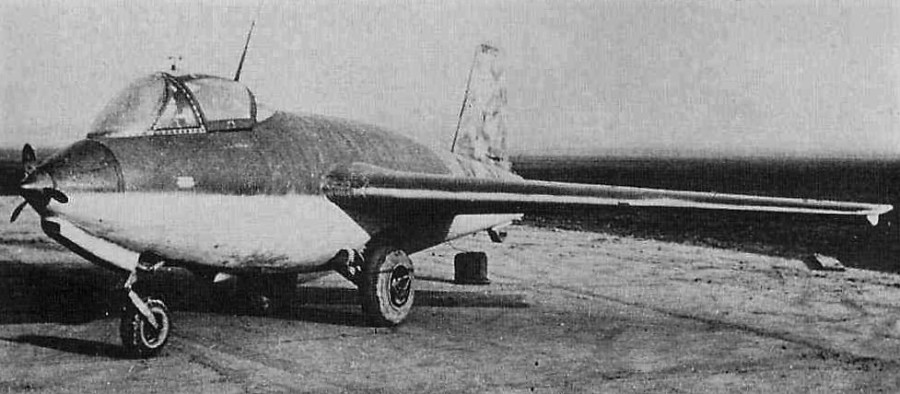
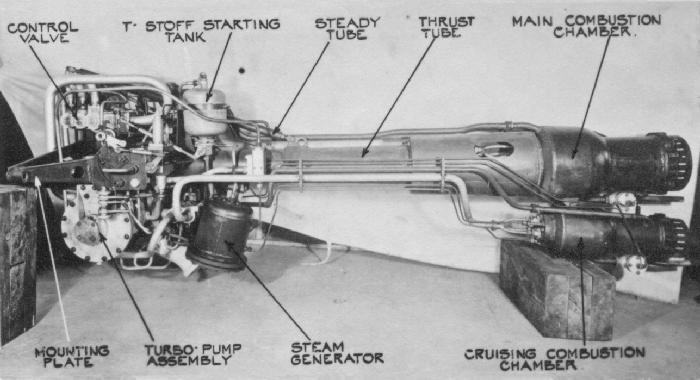
The first unpowered test flights of the Me 263 were conducted in February 1945 but as the war turned against Germany, no powered flights of the Me 263 were ever conducted. The plant was captured by the Allies in April 1945 and a prototype was taken by the United States and the Soviet Union (the latter developed it into the Mikoyan Gurevich I-270). Unfortunately it would seem that none of the prototype Me 263’s avoided the scrapyard. By May 1945 the concept of the rocket fighter itself was abandoned in Germany and Me 163 pilots were reassigned to fly the more capable Me 262 jet fighter.
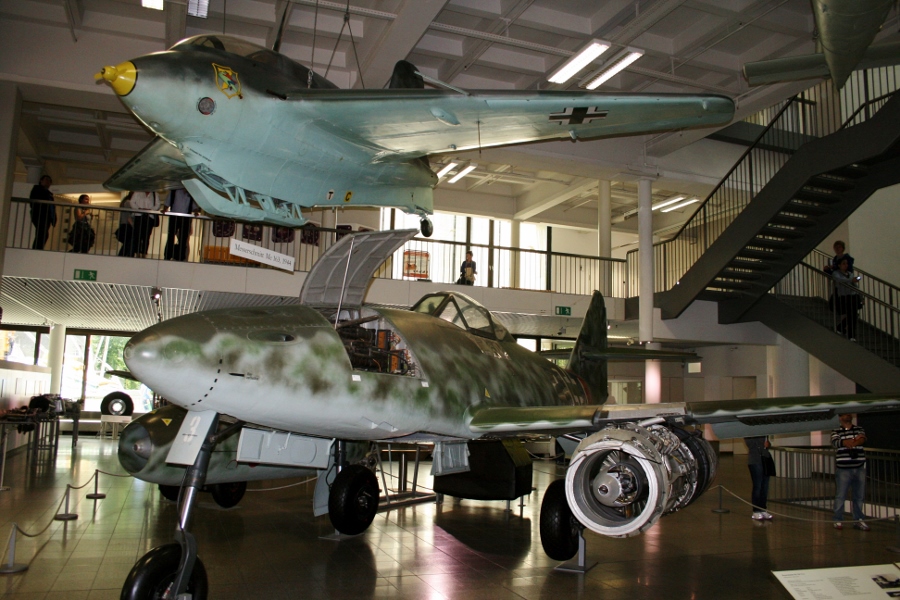
Messerschmitt Me 163 Komet Survivors
Of all the aircraft that survived the conflict, around 48 Me 163 interceptors were captured intact and at least 29 of these airframes were shipped out of Germany with 24 directly going to Great Britain where some testing was conducted (towed and unpowered flights only) and others were distributed to Australia, Canada and the United States. Most of the captured aircraft came from Jagdgeschwader 400 (JG 400) at Husum, Germany. JG 400 was formed on February 1st, 1944 to become the only military unit in the world to fly operational rocket-powered fighter aircraft in July 1944.

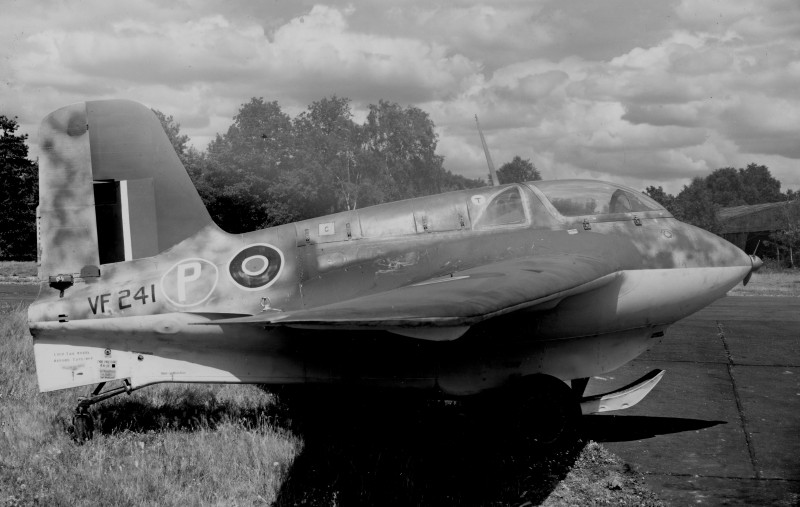
Only 10 survivors of those captured Me 163 interceptors are known to be on display in museums today. I have been lucky enough to personally see 7 of these surviving Me 163 Komet interceptors. The UK examples are the ones I have missed out on to date. It is quite interesting to see the various camouflage schemes, markings and squadron emblems that have been applied to the aircraft. Most have a sky blue underside with upper green, brown and sometimes grey camouflage and a mottled tail scheme. The survivors:
Australia
Australian War Memorial in Canberra – Me 163B-1a Werknummer 191907 manufactured in 1945. This aircraft is believed to have been part of a group of aircraft stored as replacements for JG400. Given this particular airframe does not feature any unit marking and by 1945 rocket fuel was scarce, it is not believed to have been flown operationally.

Shipped to Australia in 1946, it was stored until the 1980’s within the RAAF Museum at Point Cook, Victoria where it was repainted in 1978 based off the existing paint scheme and stencils (up until that point it had the original scheme). Additional restorative work was completed by the Commonwealth Aircraft Corporation in 1982 before being sent to the Australian War Memorial annex in 1986 for further restoration. It was painted again in 2003 and later put on display in the main museum.
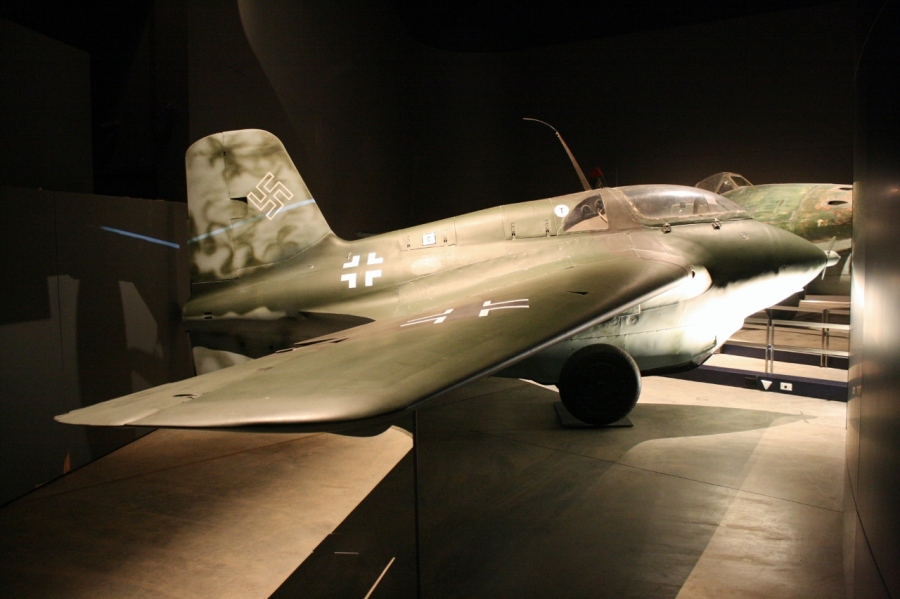
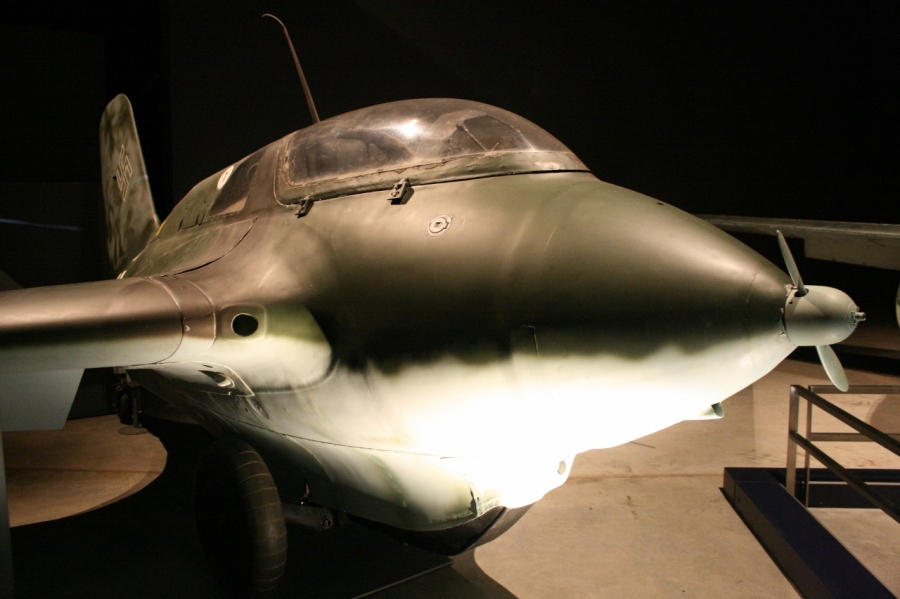
Canada
Canada Aviation and Space Museum in Ottawa, Ontario – Me 163B-1a Werknummer 191916 manufactured in 1945. It was shipped to Canada in 1946 with one other that is now in the National Museum of the USAF.
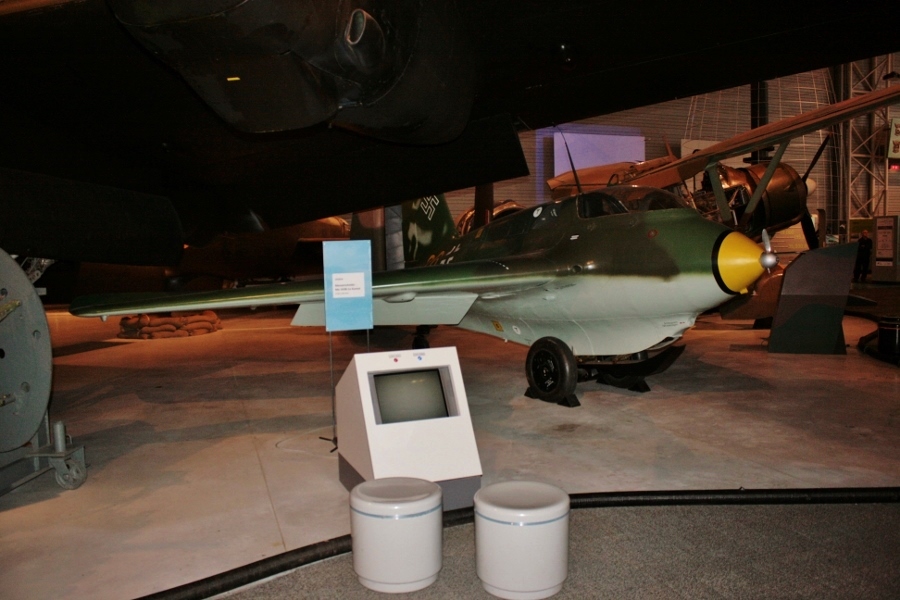
Werknummer 191916 was in good condition and was refinished in JG 400 markings for museum display between 1966 and 1967 (the other was gifted to the USAF in exchange for a Convair Atlas missile). Further restoration was completed between 2000 and 2001 and museum staff discovered some of the original paint colours and markings underneath accumulated layers of paint that had been applied over the years.



Germany
Luftwaffe Museum at Berlin-Gatow – Me 163B-1a Werknummer 191904 “Yellow 25”. It was most likely manufactured in 1945 and is displayed with a JG 400 squadron emblem of Baron Münchhausen’s cannonball ride (no doubt what it felt like to fly in the Me 163!).




Deutsches Museum in Munich – Me 163B-1a the Werknummer has previously been listed as 120370 but it is believed to be either Werknummer 191309 or 191912. Manufactured in 1944 it features an emblem showing Baron Münchhausen flying skyward on an uncorked champagne bottle – this was the symbol of the 7 Staffel (squadron) of JG 400 and again kind of summed up what it was like to fly the Me 163 I guess (just pop that cork!).
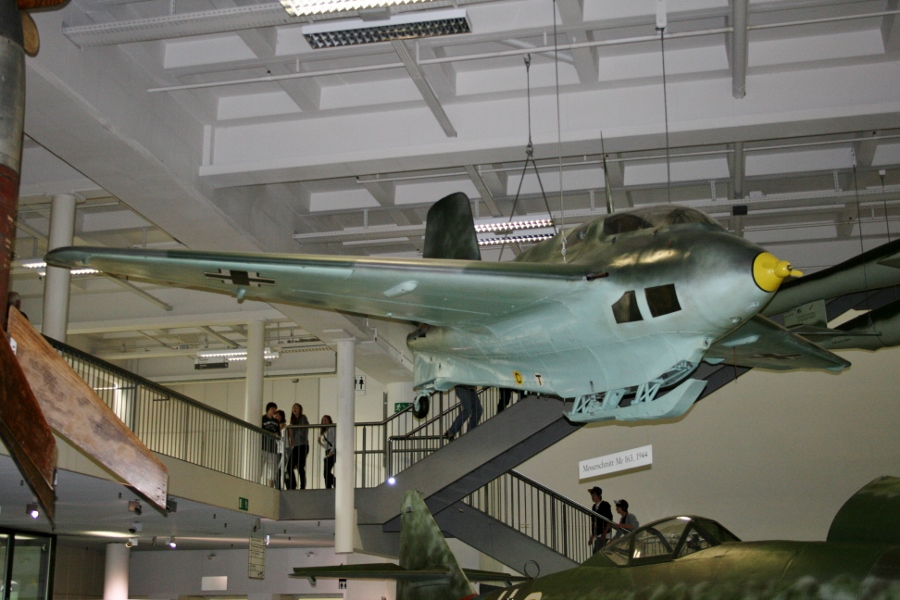
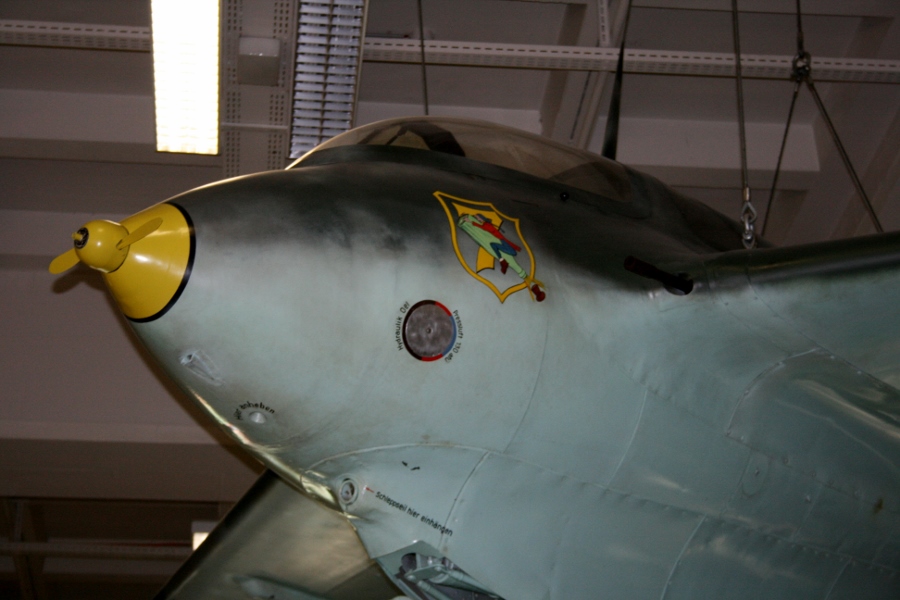
This Me-163B is displayed hanging from the ceiling with some fuselage panels removed and the landing skid deployed above the more successful Messerschmitt Me 262 Schwalbe (“Swallow”) jet fighter. Suspended next to the Me 163 is an infamous Fieseler Fi 103 / V-1 flying bomb. The livery of the Me 163B includes a mottled camouflage on the fuselage, solid edged camouflage on the upper wings and sky blue underneath.
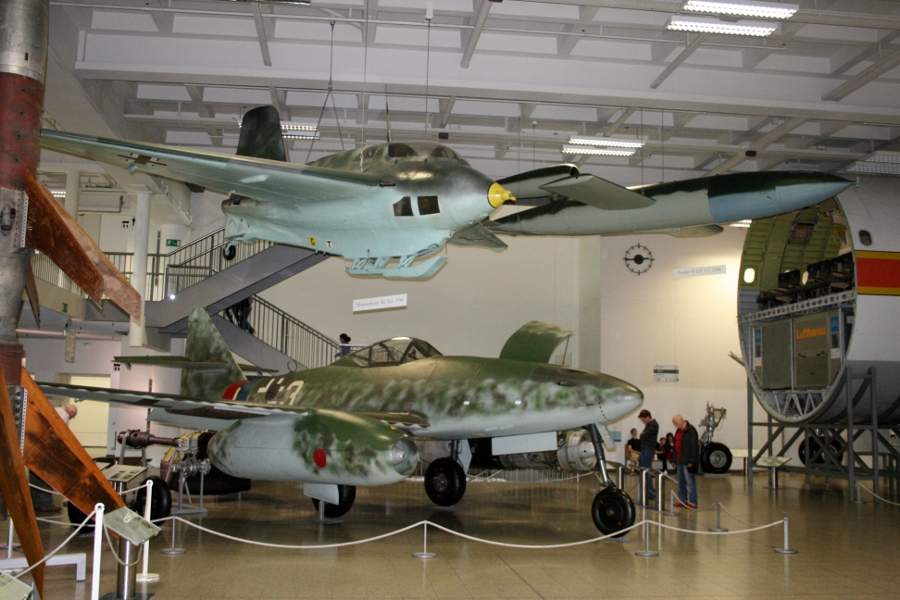
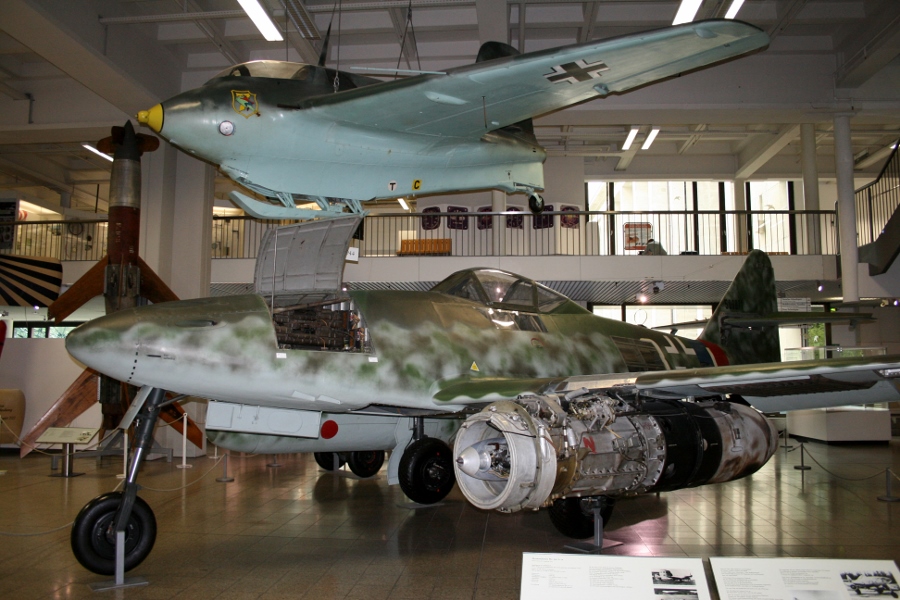
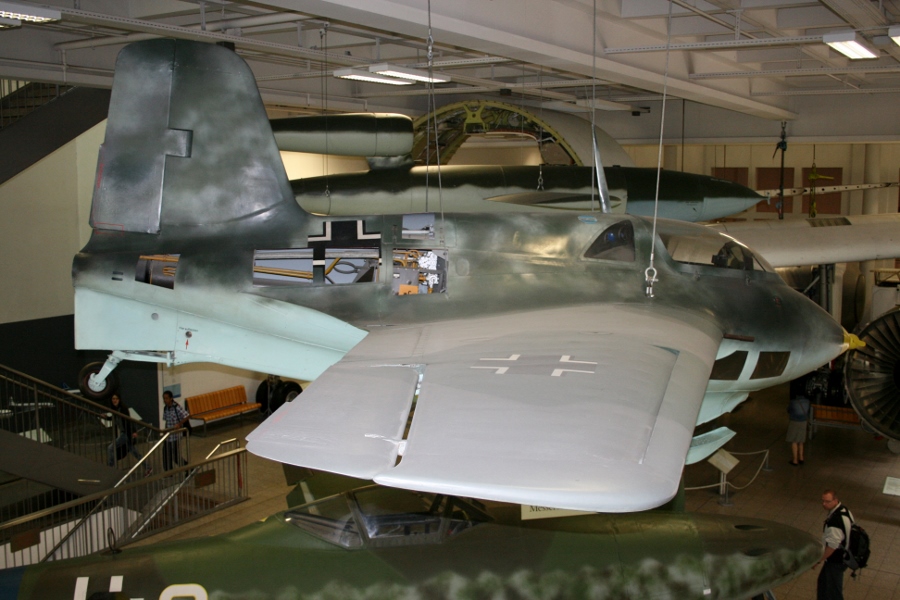
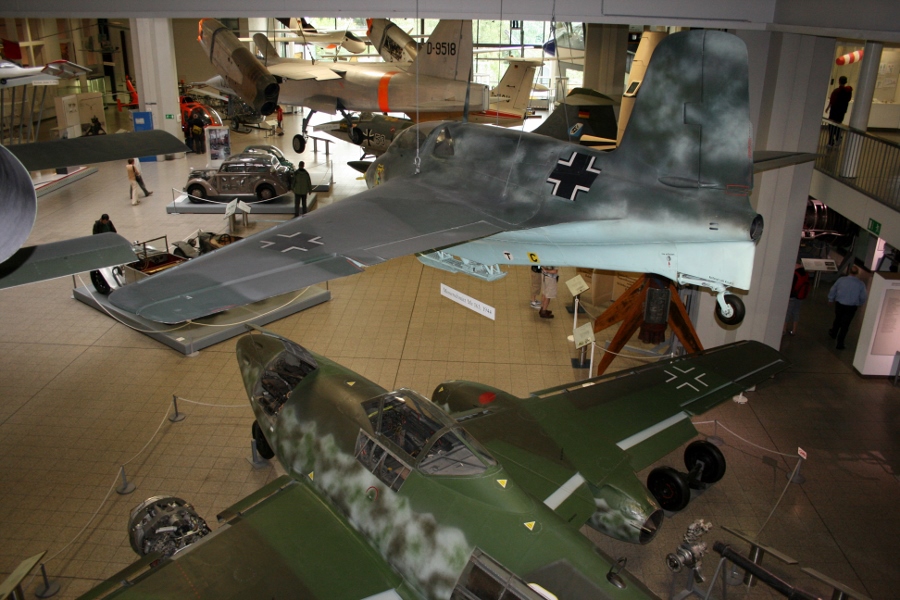


United Kingdom
RAF Museum at RAF Cosford, UK – Me 163B-1a Werknummer 191614. Believed to have been manufactured in 1945, it last flew on April 22nd, 1945 when it shot down an RAF Avro Lancaster bomber. This is thought to be the Komet displayed at the Rocket Propulsion Establishment in Westcott, Buckinghamshire before being transferred to RAF Cosford in circa 1975. The Rocket Propulsion Establishment was set up in April 1946 by the Ministry of Supply for the development of all types of rocket propulsion. Initially they studied German rocket technology including the Me 163’s Walter HWK 109-509 rocket engine, V-1 flying bomb, V-2 rocket and various German anti aircraft/shipping missile systems. Back in 1947 they had a team of 12 German scientists on hand including Dr. Johannes Schmidt who had been primarily responsible for the development of the Walter rocket engine used in the Komet (a 1947 Flight magazine article indicates they were granted limited access to current developments – the war was over but obviously full trust of an old enemy was not quite there yet!)
Apparently during restoration of Me 163B-1a Werknummer 191614 between 2000 and 2005 and again between 2008 and 2009 a number of paint schemes were applied to this aircraft that were not overly authentic (possibly this first occurred in the 1970’s at the propulsion establishment. The most recent is a grey mottled livery with a yellow nose cone but this is also said to be a non authentic scheme.
Science Museum in London, UK – Me 163B-1a Werknummer 191316 “Yellow 6”. This aircraft was taken to the Royal Aircraft Establishment (RAE) research establishment at Farnborough in 1945 and then seems to have been moved around to various RAF establishments and maintenance units for storage, as a ground training aircraft for RAF apprentices and for restoration work. It was also displayed at various RAF events until arriving at the Science Museum in 1964. Of photos I have seen it is displayed hanging from the ceiling with a mottled camouflage pattern not only on the tail but also the undersides of the fuselage. The rocket engine has been removed and is displayed separately.
National Museum of Flight at East Fortune Airfield near Edinburgh in Scotland – Me 163B-1a Werknummer 191659 “Yellow 15” was manufactured in 1945. Shipped to RAE Farnborough from Husum in 1945 it was transferred to the RAF No.6 Maintenance Unit at Brize Norton on July 26th, 1945 then onto the College of Aeronautics at Cranfield in May 1947 where it remained on display in their museum until 1975 (other than brief showings at RAF events) before being refurbished and once again transferred to its current home in Scotland.
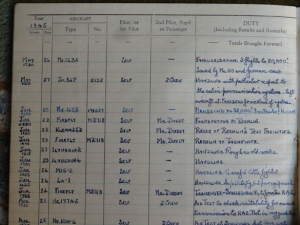
There has been extensive overpainting of the fuselage since arriving in the UK in 1945. From the museum’s website it appears that Komet “Yellow 15” is currently painted in a quite glossy single tone dark green upper camouflage with sky blue underneath. There is some also splinter camouflage markings on the upper wing with dark green matt paint. The 30mm cannons have been removed but the Walter rocket engine remains inside the fuselage.
Famous Royal Navy test pilot and Scotsman Captain Eric ‘Winkle’ Brown (1919 – 2016) flew this Me 163B Komet on June 1oth, 1945 at Husum. In doing so he became the only Allied pilot ever to fly a Komet with the rocket engine running.
On May 26th, 1945 Brown had completed 3 unpowered flights at 20,000 feet in an Me 163A that was towed by a Messerschmitt Bf 110 flown by a German crew to gain some familiarity with the aircraft. He then flew the Me 163B up to 32,000 feet and wrote in his logbook “Fantastic!” but he has also said it was a difficult and highly dangerous aircraft to fly!

United States
Smithsonian National Air and Space Museum – Steven F. Udvar-Hazy Center in Chantilly, Virginia – Me 163B-1a Werknummer 191301 is on display in an unrestored condition minus it’s 30mm cannons. This was one of 5 Me 163 aircraft shipped to the United States in 1945. It was test flown on unpowered flights being towed by a B-29 bomber then released to glide back to the ground in 1946 but before powered flights could commence, delamination of the wooden wings was discovered and it was placed in storage until presented to the Smithsonian in 1954. The Smithsonian example is displayed next to a Walter HWK 109-509A liquid-fuel rocket engine.
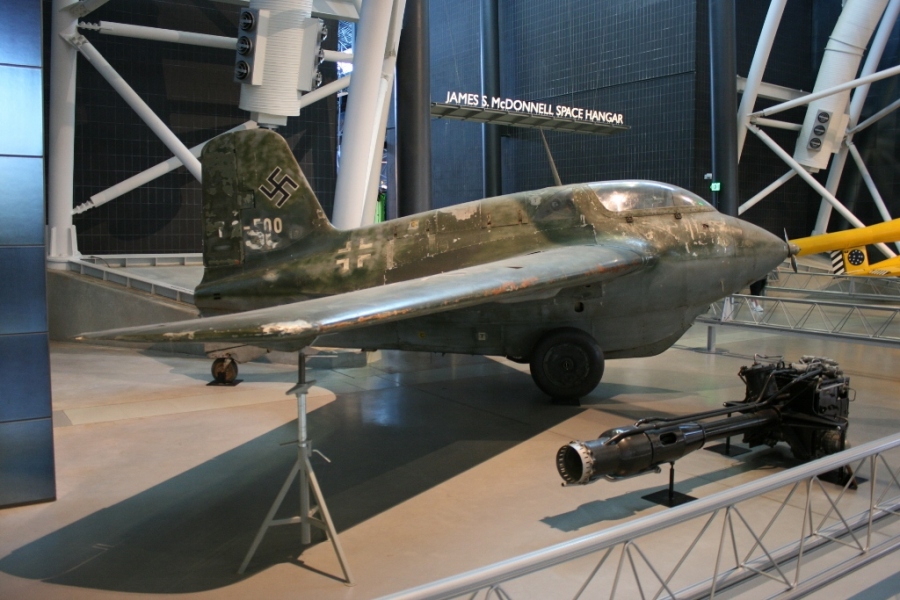
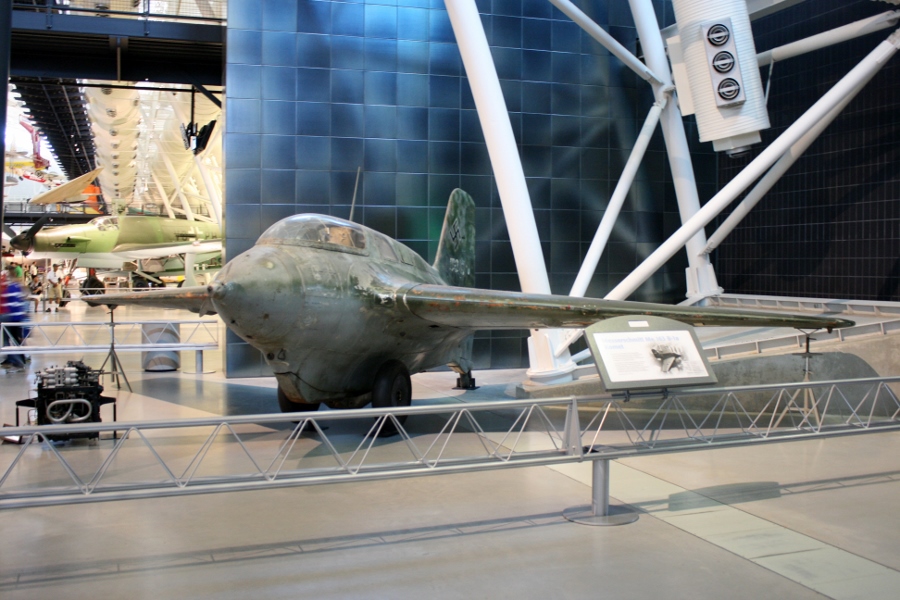


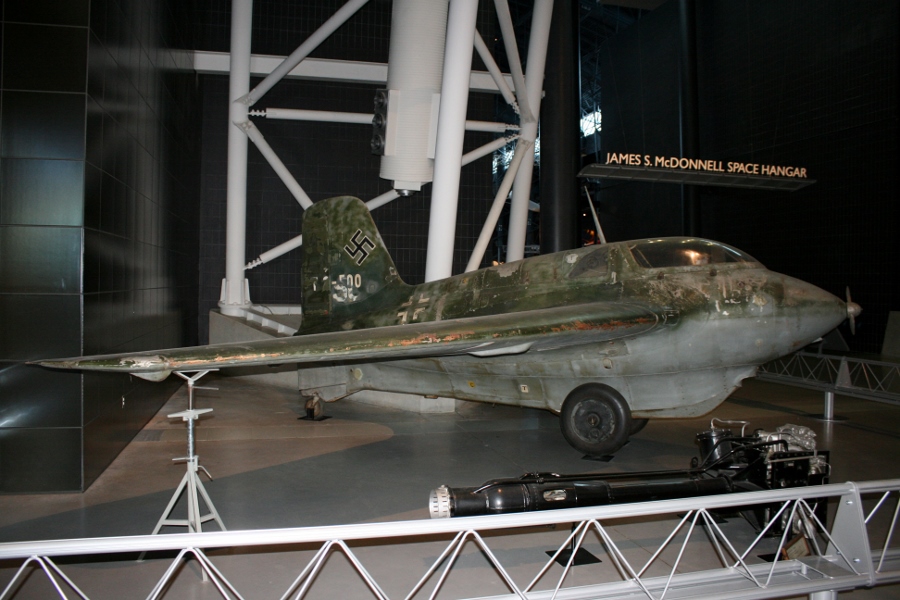

National Museum of the USAF in Dayton, Ohio – Me 163B-1a Werknummer 191095 was gifted from Canada in 1999. Restoration work had begun in 1976 and it was temporarily loaned to the USAF first in 1978.
It is believed that this Komet was sabotaged by forced labourers during construction in Germany, as a stone was found wedged under the fuel tank between a supporting strap that could have led to an explosive fuel leak. The wing glue was also contaminated which could have resulted in wing failure in flight and a defiant message was written in French inside the aircraft stating: “Manufacture Ferme” (“Plant Closed.”) “Mon coeur est en chomage” (“My heart is not occupied” even though France was)!
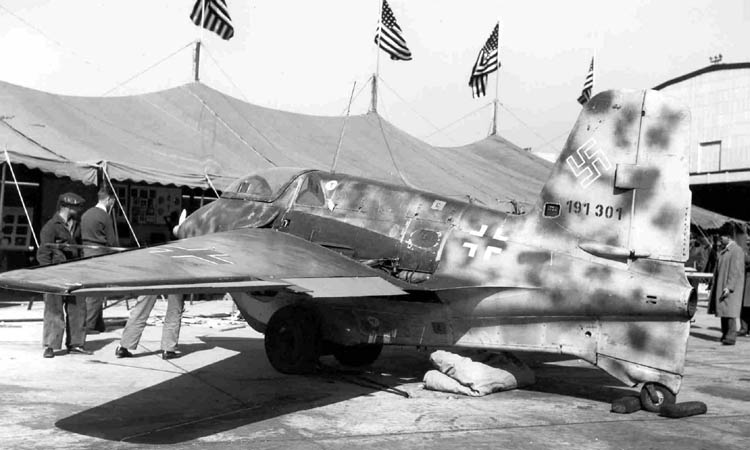
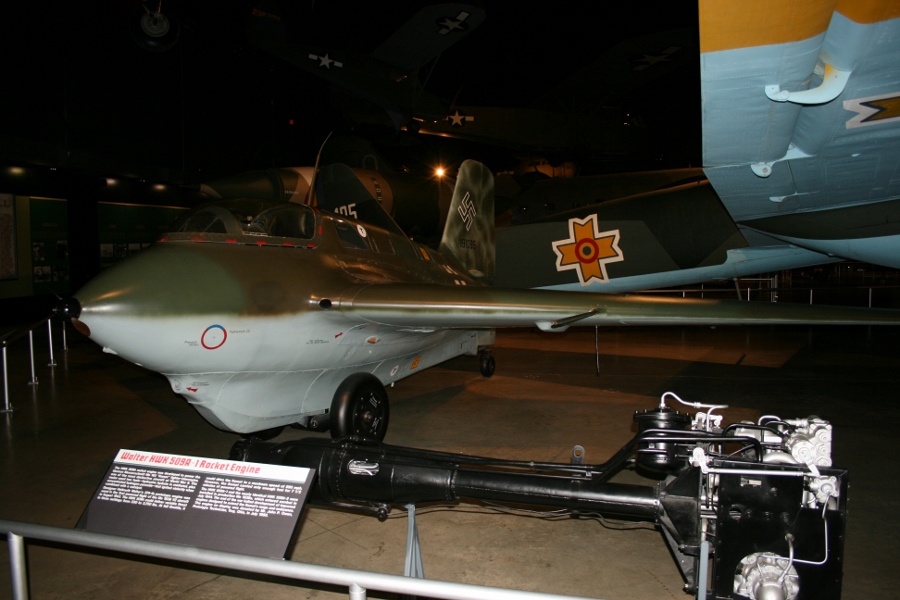

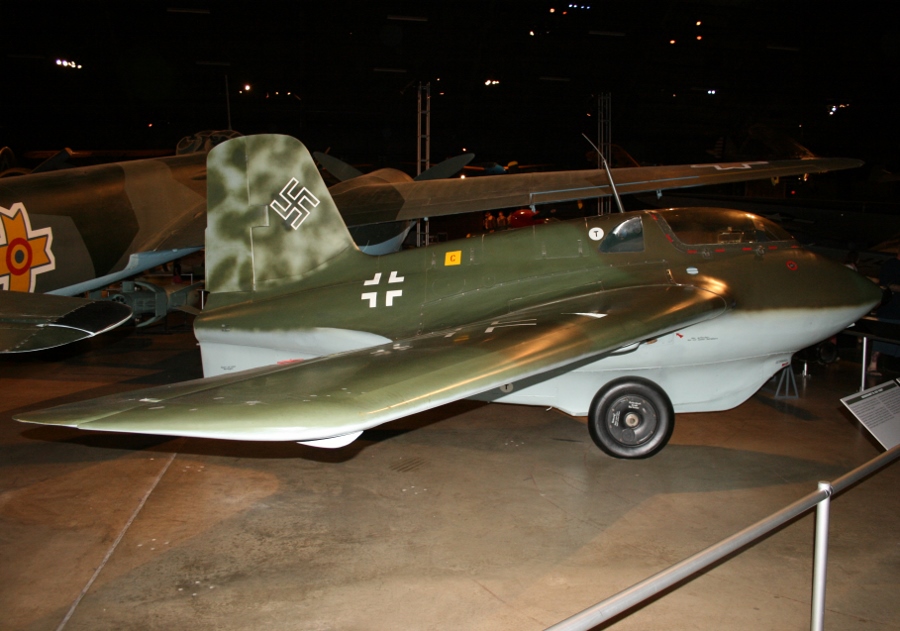
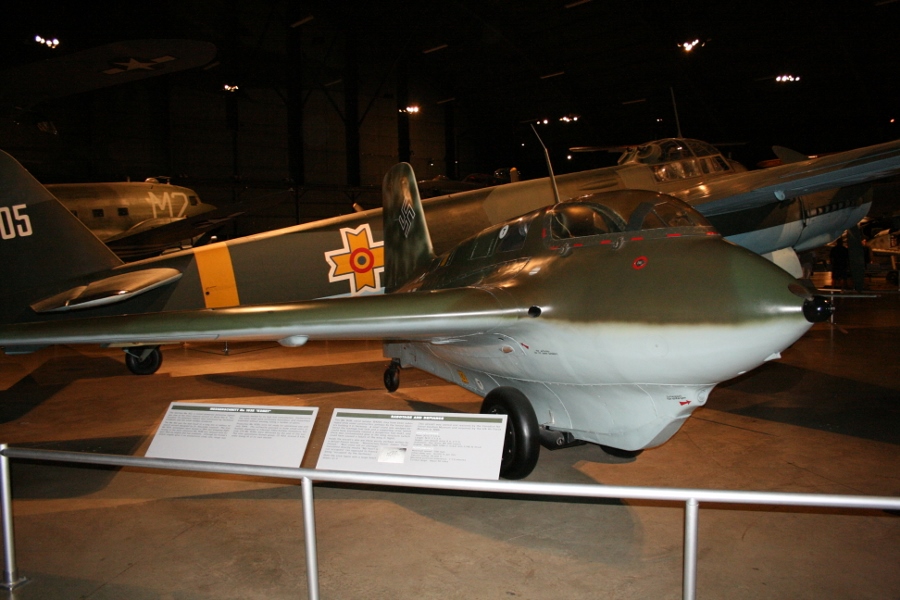
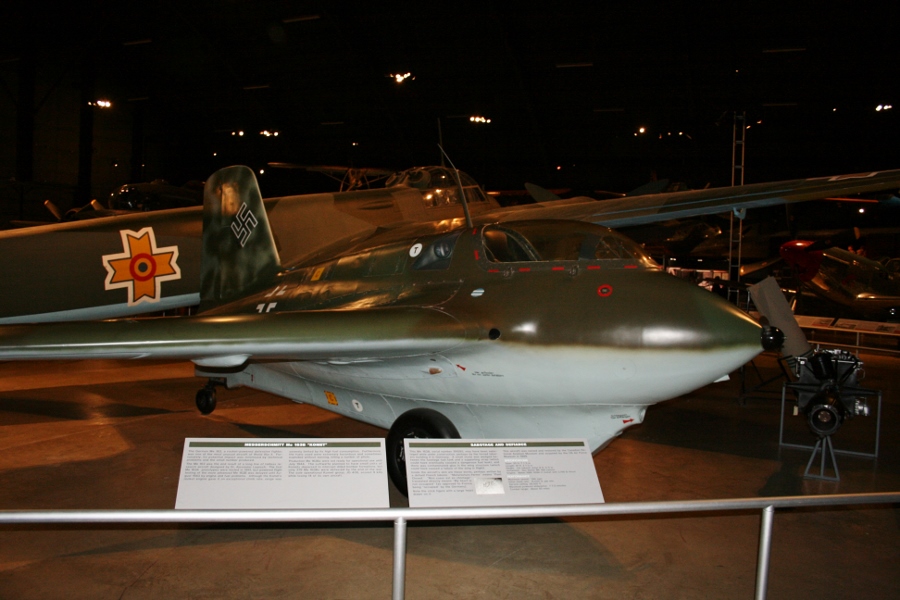
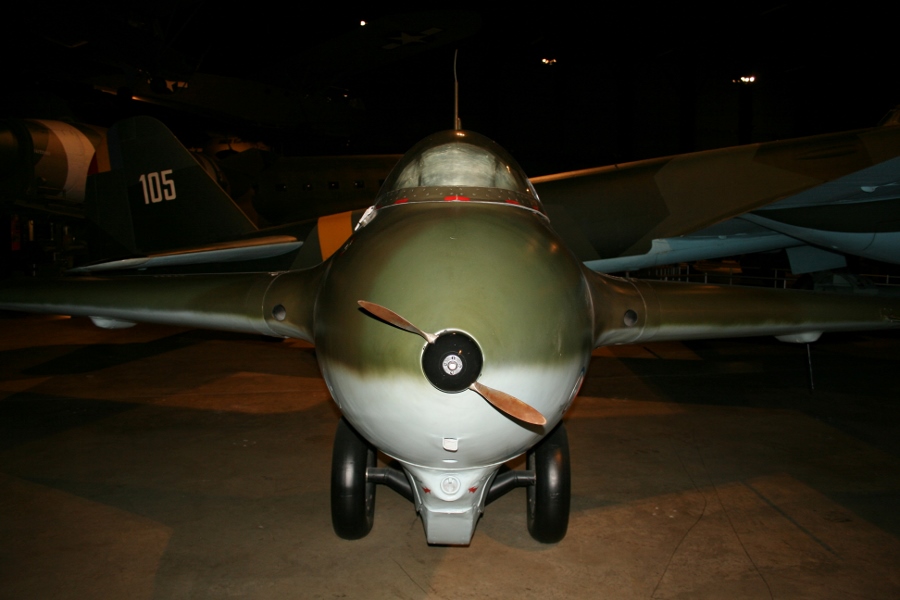
Flying Heritage Collection at Paine Field in Everett, Washington – Me 163B-1a Werknummer 191660 “Yellow 3” was manufactured in 1944 by Junkers rather than Messerschmitt. It is unknown if it saw combat. This example was previously part of the Imperial War Museum collection in the UK where restoration commenced in 1997 before being sold to the FHC in 2005. Most of their collection are flyable but I doubt anyone would ever be brave enough to take off in a volatile little Komet ever again!







None are on display in Russia that I am aware of. I wonder what happened to their captured examples? The rest of the originals captured in 1945 unfortunately seemed to have all been lost to the scrap yard in years gone by.

The Messerschmitt Me 163 Komet provided an interesting technology leap in World War Two but ultimately proved that rocket power was not the answer for interceptor aircraft. Jet propulsion was the future and remains so today.
Despite the problems experienced with the Me 163, the Japanese were facing a similar dire situation of constant Allied bombing and rapidly approaching defeat and pursued their own variant of the Me 163, the Mitsubishi J8M Shusui. More on this aircraft in my next post.
References:
Canada Aviation and Space Museum
Flight Global – Rocketry at Westcott
Flying for the Fatherland – Judy Lomax, July 1991 (about Hanna Reitsch)
Smithsonian National Air and Space Museum
Wikipedia – Messerschmitt Me 163
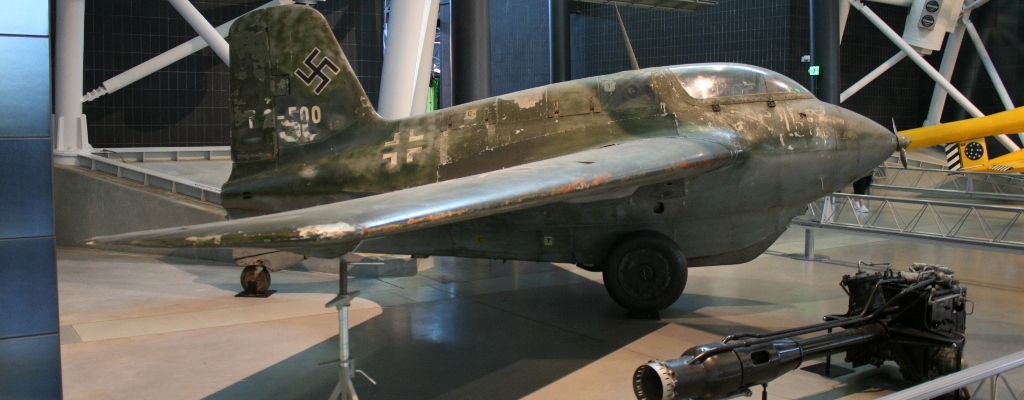
Reblogged this on Lest We Forget II and commented:
What more is there to add?
LikeLiked by 1 person
I hope my readers will enjoy this as well as I did Deano.
LikeLiked by 1 person
Thanks Pierre!
LikeLike
I am always impressed by your research and your pictures.
LikeLiked by 1 person
Much appreciated!
LikeLike
Awesome post and amazing pictures – lots I never knew, and I totally had no idea so many ME-163’s were preserved! Thanks for sharing. It was one incredible aircraft for its day – and when you think it was partly wooden, fuelled by toxic acids, and flew at unheard of speeds until the fuel ran out – at which point it became a kind of winged brick – you can only call it an aircraft for hero-pilots. Actually, when you consider that hypergolic fuelling today is done by specialists wearing what amount to armoured total pressure suits, you have to call the guys in the T- and C-Stoff trucks heroic too.
LikeLiked by 1 person
Thanks Matthew. Given the nature if the beast it is amazing so many were captured! Anyone that came near that fuel combo was brave in my opinion. Deadly!
LikeLiked by 1 person
German jet development was incredible and these examples show it well. I did promise to get a picture for you, I haven’t forgotten!
LikeLiked by 1 person
Thanks my friend. Plenty of time!
LikeLiked by 1 person
Glad that you mentioned some of the brave pilots like Hanna Reitsch who were involved in the operation of this aircraft. There were brave pilots on both sides of the war. I am reminded of the “Galland’s Circus” JG 44 squadron of Me 262s which tried to protect their country while under relentless attack from allied aircraft in 1945. Also, it is sad to think of the millions upon million lost in the war but at the same time, the war brought about technological advances like the rocket powered and jet powered aircrafts. Really appreciate your work! G’day mate!
LikeLiked by 1 person
G’day Timothy and thanks. Those brave test pilots paved the way at great personal risk!
LikeLike
[…] the issues experienced in Germany with the Me 163 the Japanese continued with the J8M program and used the same highly volatile German propellants of […]
LikeLike
Superb website ! Thank you so much for sharing !!!
Andrew Perovich
Anoka, MN, USA
LikeLike
Thanks for taking a look Andrew!
LikeLike
Hi there Deano.
I just stumbled across your website looking for that fantastic picture of a Me163 flying past a B17.
My question is whether you know the authenticity of that very picture?
Apparently there is a great debate where everyone are frenzied about it being fake.
Kind regards and a shout out to your great page.
Tommi
LikeLiked by 1 person
Thanks Tommi! I suspect it is fake too
LikeLike
[…] the issues experienced in Germany with the Me 163 the Japanese continued with the J8M program and used the same highly volatile German propellants of […]
LikeLike
My uncle died in a B17 that was shot down by a Komet in August 1944. Some of the crew escaped before the plane exploded and were captured on the ground. I actually saw a film of the attack a few years ago.
LikeLiked by 1 person
Would have been terrifying at that moment!
LikeLike